The Washington State Fair runs Friday, Sept. 1 through Sunday, Sept. 24. Here are the best performances, eats and parking options.
PUYALLUP, Wash. — Get ready for stomach-flipping rides, deep fried foods and family fun – the Washington State Fair returns Friday, Sept. 1. Here is a complete guide on what’s new, what to eat and who to see at the 2023 Washington State Fair.
The fair opens Friday, Sept. 1 and runs through Sunday, Sept. 24. The fair is closed every Tuesday, and also closed on Wednesday, Sept. 6.
How to score discounted tickets
All tickets are $1 off when purchased online instead of at the gate. Kids ages 5 and under are free.
Weekday ticket prices at the gate are $15 for adults, $13 for children (ages 6-18) and seniors. Weekend prices are $18 for adults and $15 for children and seniors.
Free entrance days are held on:
New this year
Thrill seekers are rewarded with the new ride Revolution 360, a swinging pendulum ride tilting 120 degrees and offering 360-degree rotation.
Telling the story of Washington’s rich food and farming history is the Bee Box Activity at The Farm at SillyVille. This free and hands-on exhibit connects kids with the state’s agriculture industry, the farmers who produce the food Washingtonians eat, and healthy eating choices. This year focuses on the world of bees and the role they play in Washington’s agriculture.
For anyone with a strong sense of adventure, another new exhibit is Survival: The Exhibition. This experience with a ropes course and zip line showcases the wonders of nature and asks guests to ponder: how can humans survive here? Survival: The Exhibition combines STEM concepts with interactive challenges to empower people with the skills, knowledge and confidence to survive any scenario. The experience is $9 for ages 3 and older.
Wear your dancing shoes to the new Shots & Spurs Line Dancing Party at 4 p.m. Saturday, Sept. 9. Between rodeo performances, learn how to line dance, enjoy a cowboy-themed charcuterie treat, a private bar, photo station and more. Tickets must be purchased online in advance.
Fair foods
Did someone say cheddar cheese soft serve in a cone? New this year, The Big Cheese is serving up cheesy delights to cover every meal of the day from breakfast to dessert. Nashville Hot cheese curds with cheddar ranch, jumbo cheddar-stuffed tater tots with nacho cheese and more await.
Some vendors who debuted at The Taste NW in July are returning for the full fair experience. Flaco’s Tacos is dishing up Mexican fare, Churreria will satisfy your sweet tooth with Spanish churros and Starvin’ Marvin has all your food truck needs. Joe’s Pretzels also have doughy delights on deck to satisfy your taste buds.
This year also marks the 100th anniversary of Krusty Pup serving burgers, fries and the iconic Krusty Pups to fair guests.
Concerts and special events
The 2023 concert star-studded lineup includes:
Every Friday night the fair offers a firework show, lighting up the skies at 10 p.m. Sept. 1, 8, 15 and 22.
Rodeo information
The Puyallup Rodeo is from Sept. 7-10. It features events such as bull riding, bareback riding, tie down roping, steer wrestling, barrel racing, a rodeo breakfast with the Wranglers and more.
The Western Rodeo Parade and Cattle Drive is at 10 a.m. Friday, Sept. 8. This non-motorized parade along Meridian Street into downtown Puyallup includes a cattle drive down Meridian Street, equestrian drill teams, marching bands, characters in costume and more.
All rodeo events are held at the Grandstand at the north end of the fairgrounds. All rodeo tickets also include same-day fair admission.
Map of the fairgrounds
Credit: Washington State Fair
Parking
Parking is available in any official fair lot. Weekday parking is $15 and weekend parking is $20. Premium parking is available daily in Lot B between the Red and Gold gates for $35. VIP parking to reserve your spot is $50 and must be reserved online in advance.
Credit: Washington State Fair
Fair-y important basics
During Labor Day Weekend, the fair is open from 10:30 a.m. to 10:30 p.m. Friday; from 9:30 a.m. to 10:30 p.m. Saturday and Sunday; and from 9:30 a.m. to 9:30 p.m. Monday.
After Labor Day, the fair is open from 10:30 a.m. to 9:30 p.m. Mondays, Wednesdays and Thursdays; from 10:30 a.m. to 10:30 p.m. on Fridays; from 9:30 a.m. to 10:30 p.m. on Saturdays; and from 9:30 a.m. to 9:30 p.m. on Sundays.
The fair is located at 110 9th Avenue SW in Puyallup.

 253-534-9596
253-534-9596




 Service Areas
Service Areas























